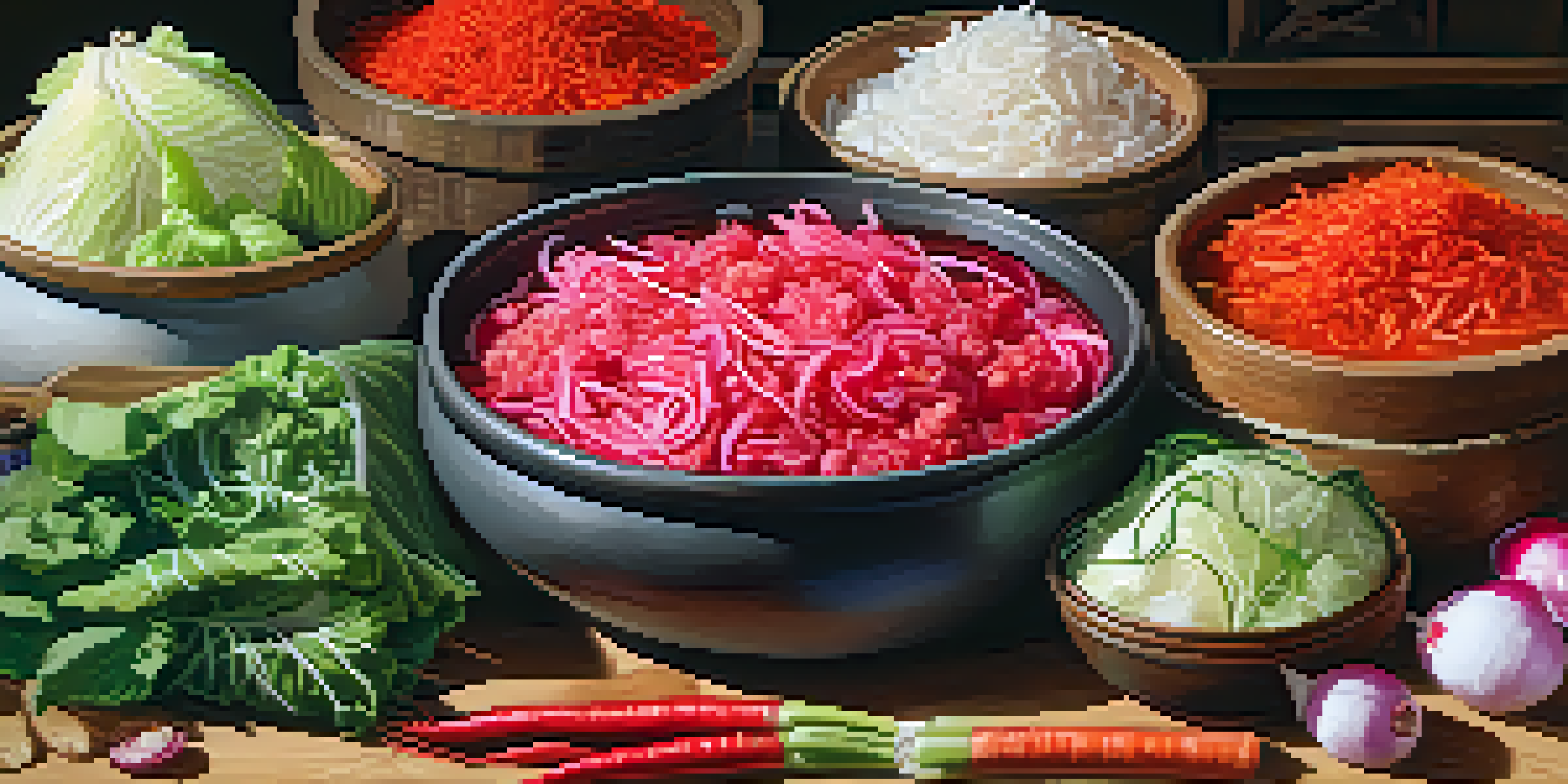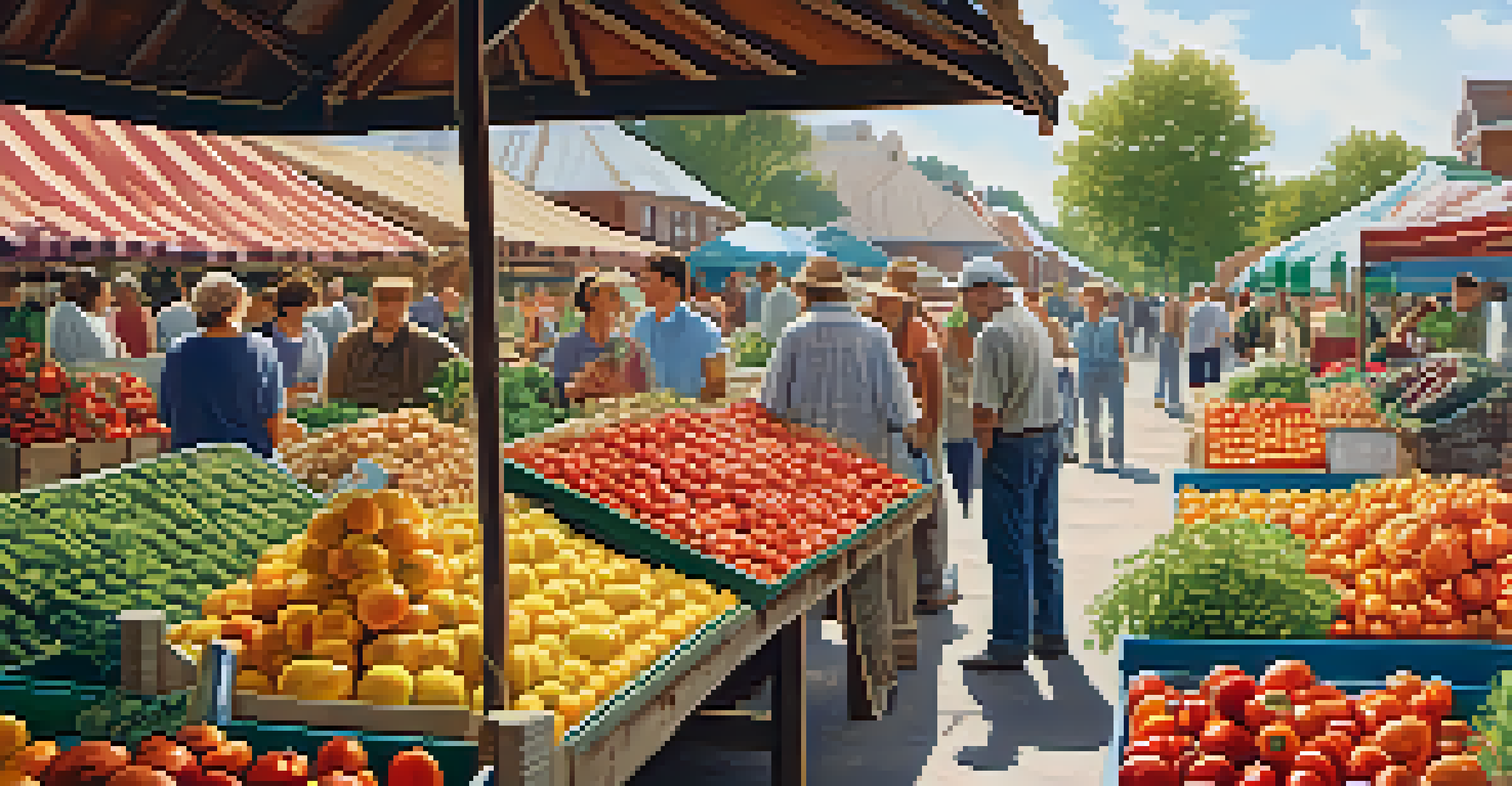The Role of Technology in Heritage Food Preservation Today

Understanding Heritage Foods and Their Importance
Heritage foods are not just meals; they are stories passed down through generations. These foods often reflect the culture and traditions of a community, serving as a delicious reminder of our roots. By preserving these culinary treasures, we keep the history and identity of various cultures alive.
Food is our common ground, a language we all understand.
The significance of heritage foods goes beyond nostalgia; they contribute to biodiversity and sustainability. Many heritage varieties of crops are more resilient to climate change, making them vital for future food security. Additionally, they often require less chemical intervention, promoting healthier ecosystems.
However, as globalization spreads, many of these traditional foods face the risk of disappearing. Enter technology, which offers innovative solutions to ensure that these time-honored recipes and ingredients are not lost to time.
Digital Archiving: Capturing Culinary Traditions
One of the most significant advancements in food preservation is digital archiving. This involves using technology to document recipes, cooking methods, and stories associated with heritage foods. By creating a digital record, we can ensure that these traditions are accessible to future generations.

Platforms like websites and social media allow chefs and home cooks to share their heritage recipes with a global audience. This not only helps preserve these dishes but also promotes cultural exchange and appreciation. For instance, a family recipe for kimchi can inspire someone halfway across the world to explore Korean cuisine.
Heritage Foods Preserve Culture
Heritage foods are vital for maintaining cultural identity and biodiversity, reflecting the traditions of communities.
Moreover, digital archiving encourages communities to participate in preserving their food heritage. By collecting and sharing their recipes online, individuals can contribute to a larger narrative that celebrates their culinary history.
Smart Farming Techniques for Sustainable Ingredients
Technology in agriculture, often referred to as smart farming, plays a crucial role in preserving heritage foods. By using data analytics, farmers can monitor soil health, crop performance, and weather patterns. This information helps them grow heritage varieties more effectively, ensuring these crops thrive in modern conditions.
Preservation of one's own culture does not require contempt or disrespect for other cultures.
For example, precision agriculture tools allow farmers to apply water and nutrients more efficiently, which can be especially beneficial for traditional crops that may require specific growing conditions. These techniques reduce waste and enhance yields, making it easier to sustain heritage crops.
Additionally, smart farming fosters a connection between consumers and their food sources. When people understand how their food is grown, especially traditional varieties, they are more likely to appreciate and support sustainable practices.
The Role of Social Media in Heritage Food Promotion
Social media platforms have become powerful tools for promoting heritage foods. Chefs, food enthusiasts, and cultural advocates use these platforms to showcase traditional recipes and cooking methods. This visibility not only helps preserve these foods but also creates a sense of community around shared culinary experiences.
Through engaging content like videos, blog posts, and photo stories, social media users can share their passion for heritage foods with others. For instance, a short video demonstrating the preparation of a classic dish can inspire viewers to try it themselves, keeping the tradition alive.
Technology Aids Food Preservation
Innovative technologies like digital archiving and smart farming enhance the preservation and appreciation of heritage foods.
Moreover, social media enables discussions about food heritage, raising awareness of the importance of preserving these culinary practices. The more we talk about them, the more likely they are to be valued and passed down.
Innovative Food Preservation Techniques
Modern technology has introduced innovative preservation methods that can help maintain the quality and authenticity of heritage foods. Techniques like freeze-drying, vacuum sealing, and fermentation allow for longer shelf lives without compromising flavor or nutritional value. These methods can ensure that traditional foods remain accessible in today's fast-paced world.
For instance, freeze-drying allows for the preservation of seasonal fruits or vegetables, making them available year-round. This not only supports local farmers but also enables consumers to enjoy these heritage ingredients at any time.
Furthermore, these techniques can be used to create new products that honor traditional recipes while appealing to modern tastes. For example, a heritage grain might be turned into a gluten-free flour, merging tradition with contemporary dietary needs.
Blockchain Technology and Food Traceability
Blockchain technology is revolutionizing how we trace the origins of food, including heritage varieties. By creating a secure and transparent record of food production, consumers can learn more about where their food comes from and how it is made. This knowledge fosters trust and encourages the purchase of heritage foods.
For example, a blockchain system could document the journey of a traditional cheese from farm to table. Consumers can scan a QR code to see the entire production process, from the heritage breed of cow to the artisan cheesemaker's methods. This transparency not only supports local producers but also enhances the appreciation for traditional food craftsmanship.
Social Media Boosts Culinary Traditions
Social media platforms promote heritage foods by creating communities and sharing traditional recipes, fostering cultural exchange.
In addition, understanding the story behind the food can encourage consumers to choose heritage varieties over mass-produced options. This shift in consumer behavior can help sustain the production of these traditional foods, ensuring they remain part of our culinary landscape.
Educational Initiatives and Technology in Food Heritage
Technology is also playing a vital role in educating the public about heritage foods. Online courses, webinars, and interactive apps are making it easier for people to learn about the importance of these culinary traditions. By making education accessible, we can inspire a new generation to appreciate and preserve heritage foods.
For example, a cooking class that focuses on traditional techniques can be offered online, allowing participants from all over the world to join. This not only spreads knowledge but also fosters a sense of connection among learners who share a common interest in culinary heritage.

Moreover, educational initiatives can encourage community involvement, with local organizations using technology to host events that celebrate heritage foods. These gatherings can bring people together to share recipes, stories, and cooking experiences, strengthening community bonds around food.
The Future of Heritage Food Preservation with Technology
As we look to the future, the role of technology in heritage food preservation will continue to grow. Innovations in agriculture, digital archiving, and educational initiatives will shape how we interact with our culinary heritage. The intersection of tradition and technology offers exciting opportunities to keep these foods alive and thriving.
By embracing new tools and methods, we can ensure that heritage foods are not only preserved but also celebrated in modern cuisine. As more people become aware of the importance of these foods, we can create a movement that values sustainability and authenticity.
Ultimately, the future of heritage food preservation lies in collaboration—between farmers, chefs, educators, and consumers. Together, we can harness technology to protect our culinary heritage and pass it on to future generations.